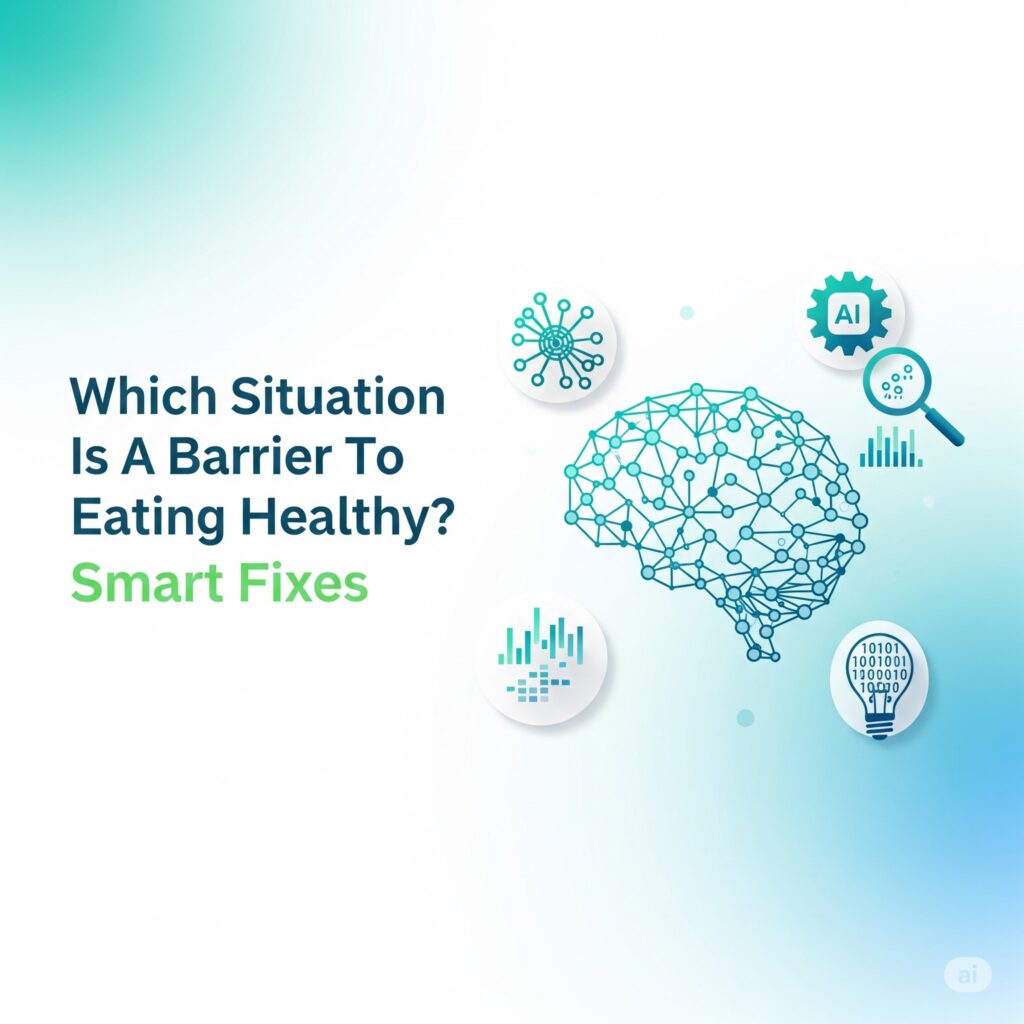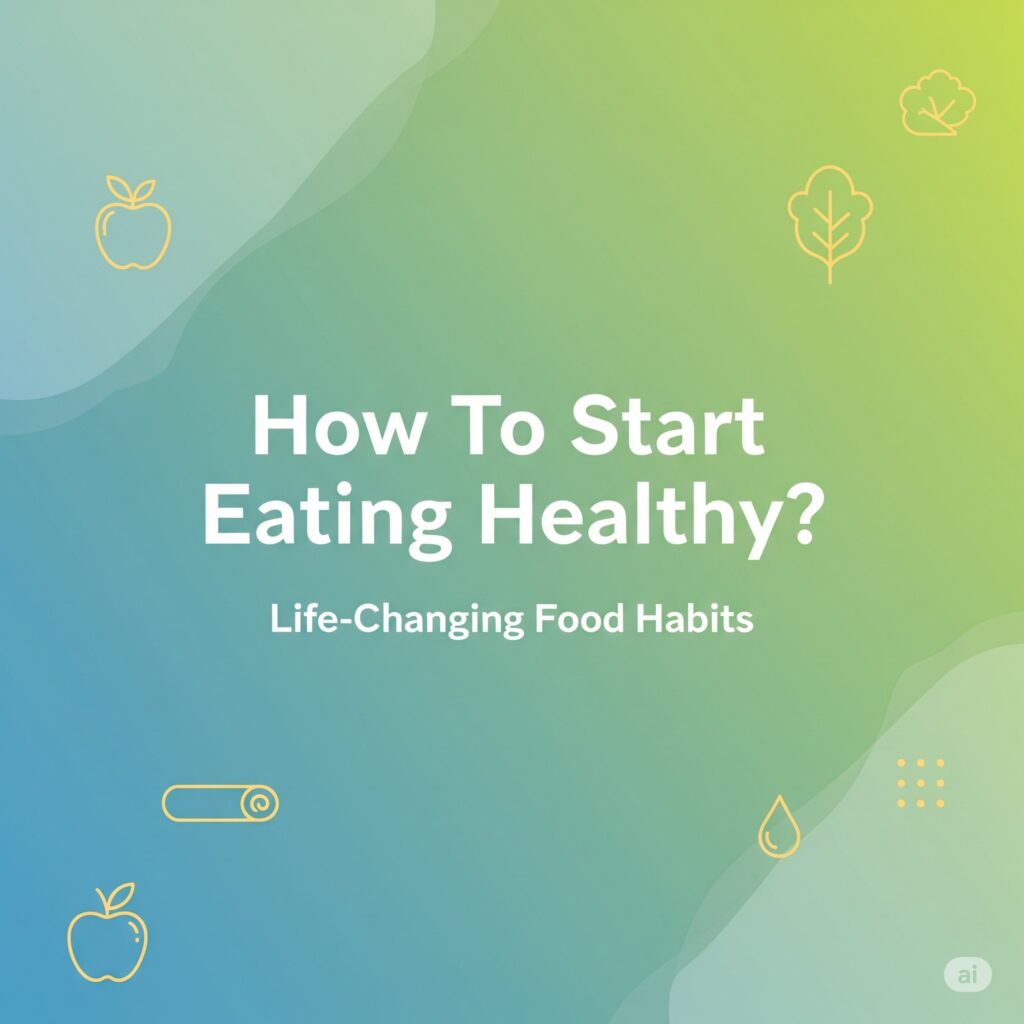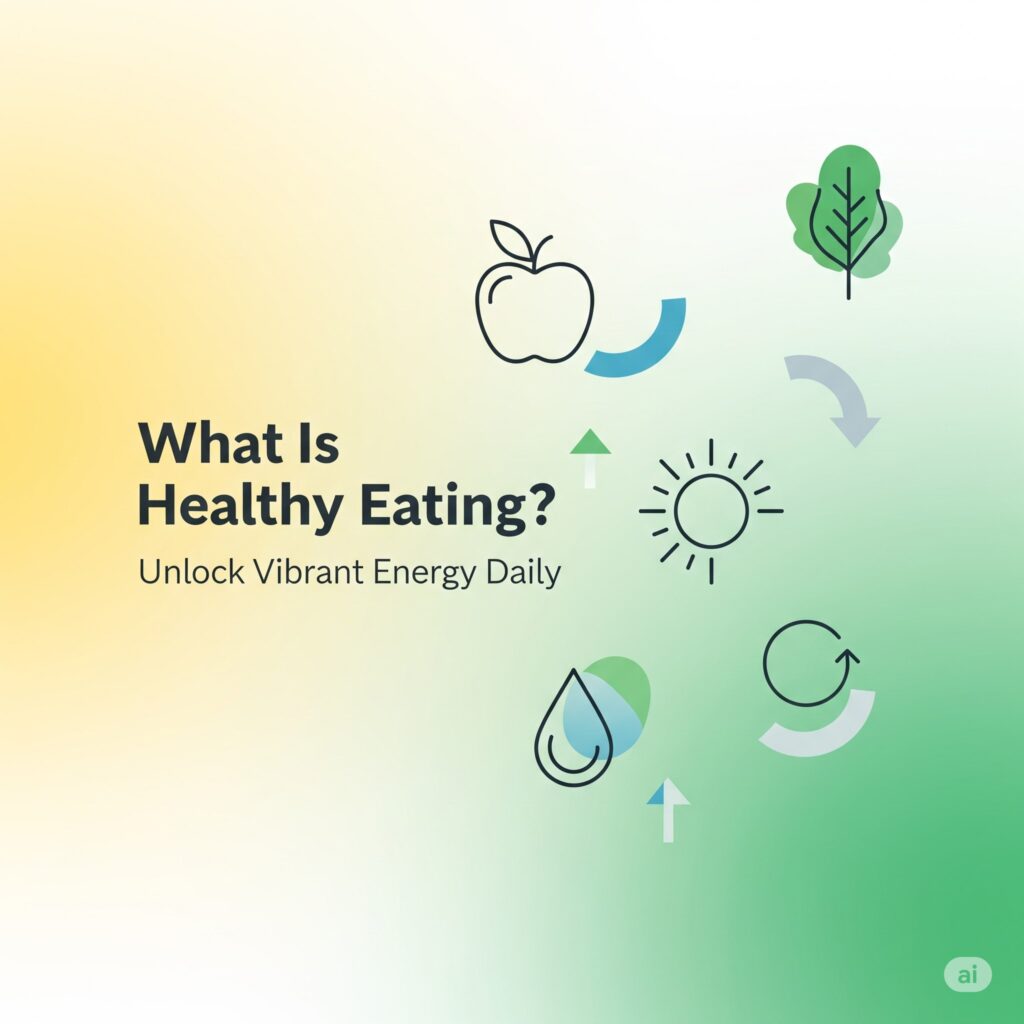Which situation is a barrier to eating healthy? Find out how everyday habits like stress, late nights, or screen time might be quietly wrecking your diet.
Eating healthy sounds simple, right? But in real life, it’s not always that easy. School, work, late nights, or just scrolling your phone can get in the way. You know you should eat better—but something always comes up.
So, which situation is a barrier to eating healthy? That’s the question many students like you ask when trying to make smarter food choices. It’s not just about knowing what to eat. It’s about when, how, and why your routine stops you from doing it.
Some situations sneak in without you noticing. Like skipping meals because you’re busy. Or grabbing fast food when you’re tired. Which situation is a barrier to eating healthy? It’s not the same for everyone, but it usually links to stress, distractions, or poor planning.
This blog dives into those real-life struggles. You’ll see how small, everyday moments can make healthy eating harder—and what you can do to stay on track. If you’ve ever wondered which situation is a barrier to eating healthy, keep reading. You might spot your own habits in here—and finally fix them.
Table of contents
- Which situation is a barrier to eating healthy with technology and unhealthy eating habits?
- How AI impact on food choices shows which situation is a barrier to eating healthy?
- Which situation is a barrier to eating healthy when social media influences your meals?
- Which situation is a barrier to eating healthy in food deserts without digital solutions?
- Which situation is a barrier to eating healthy that AI tools can help track?
- Screen time vs healthy meal planning: Which situation is a barrier to eating healthy?
- Which situation is a barrier to eating healthy caused by tech-related lifestyle challenges?
- AI-based diet planning: Which situation is a barrier to eating healthy for busy people?
- Which situation is a barrier to eating healthy when digital distractions take over?
- Which situation is a barrier to eating healthy in modern life’s fast digital pace?
- FAQs: Which situation is a barrier to eating healthy?
- Conclusion
Which situation is a barrier to eating healthy with technology and unhealthy eating habits?
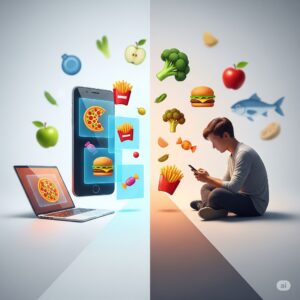
When screens rule your day, your plate might suffer. Technology has made life easier, but it’s also changed how we eat. Scrolling through TikTok, binge-watching shows, or gaming for hours can distract you from real hunger signals. You might skip meals, eat late at night, or grab fast snacks just to save time. These habits can mess with your nutrition without you even noticing.
Fast food ordering apps make it too easy
Ordering apps are super convenient, but they often lead to unhealthy choices. With just a few taps, you can get greasy burgers, sugary drinks, and salty fries delivered in minutes. This kind of instant access can turn into a habit. Ask yourself: Which situation is a barrier to eating healthy?—convenience is definitely one of them.
Mindless eating during screen time
Watching YouTube or gaming while eating means you’re not paying attention to your food. This is called “mindless eating.” You eat more than you need, and usually, it’s junk. Over time, this leads to poor food habits. If you’re wondering which situation is a barrier to eating healthy, multitasking with screens is a big one.
Too much screen time, too little movement Which situation is a barrier to eating healthy?
When you’re glued to your devices, you’re not moving your body much. Less movement can affect your appetite and energy balance. You may not feel like cooking or eating real meals. This tech-based lifestyle is another clear answer to Which situation is a barrier to eating healthy?
So, while tech helps in many ways, it can also be the silent reason your diet isn’t great. Being aware of this can help you take small steps toward better eating habits—even in a digital world.
How AI impact on food choices shows which situation is a barrier to eating healthy?
AI knows what you like—but is that always a good thing? AI is everywhere now—from your music apps to your food delivery suggestions. It learns what you like to eat, when you eat, and even how often you order. While that sounds cool, it can also lead to unhealthy food habits if you’re not careful.
AI keeps pushing fast food suggestions
Ever noticed how food delivery apps show your favorite burgers and pizzas first? That’s AI in action. It recommends what you order the most. But if you’re always choosing quick, greasy meals, AI will keep showing those. So, which situation is a barrier to eating healthy? The constant temptation from personalized fast food ads is definitely one.
Personalized food ads trick your brain Which situation is a barrier to eating healthy?
Social media platforms use AI to show food content based on your likes and searches. If you’ve clicked on one milkshake video, your feed might be full of sugary treats the next day. This triggers cravings, even when you’re not hungry. This type of AI influence is another reason which situation is a barrier to eating healthy is linked to digital food marketing.
AI diet advice isn’t always balanced
Some AI health apps try to help by giving meal plans or calorie tracking. But many of these tools aren’t perfect. They often skip over cultural foods or don’t consider your real-life schedule. This shows that even helpful AI can be misleading. So, again, which situation is a barrier to eating healthy?—overreliance on AI tools without human input can be one.
AI can help you eat better, but only if you stay in control. If you follow every suggestion it makes, your healthy choices might take a back seat.
Which situation is a barrier to eating healthy when social media influences your meals?
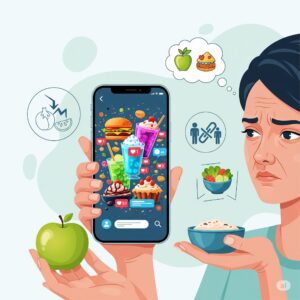
Scrolling your feed could be shaping your food habits—without you knowing it. Every time you open TikTok or Instagram, chances are you’ll see videos of food—cheesy pasta, loaded fries, or 10-second dessert hacks. These posts look fun, but they can impact your eating choices more than you think.
Viral food trends make unhealthy eating look normal Which situation is a barrier to eating healthy?
Social media makes junk food look exciting and easy. Influencers often share snacks loaded with sugar or fat, calling them “treats” or “comfort food.” Watching these trends daily makes it easy to crave similar meals. So, which situation is a barrier to eating healthy? Being constantly exposed to high-calorie trends is definitely one.
“What I eat in a day” posts can be misleading
You’ve probably seen those short videos where someone shares their meals for the day. While some are helpful, others set unrealistic standards or promote restrictive diets. These clips might make you feel like your normal meals aren’t “good enough,” even if they’re balanced. Again, ask yourself—which situation is a barrier to eating healthy? Comparing your real meals to edited online content is a big one.
Likes and shares affect your food choices
Ever notice how the most-liked posts are usually the most extreme ones? Giant milkshakes, massive burgers, or colorful candy bowls grab attention. When these posts go viral, it pushes more people to try them—even when they’re not healthy. That’s why which situation is a barrier to eating healthy? also includes following what’s trending over what’s good for your body.
Social media doesn’t have to ruin your meals. Just remember to pause, think, and choose what’s right for you—not just what looks good on your screen.
Which situation is a barrier to eating healthy in food deserts without digital solutions?
When healthy food is far away and tech can’t help, choices get limited. Some places, especially in low-income or rural areas, are called food deserts. That means there are no nearby stores selling fresh fruits, veggies, or healthy snacks. Most people in these areas only have access to fast food, gas station snacks, or sugary drinks.
No stores, no apps, and no options
Living in a food desert is already hard. But it gets worse when you don’t have access to apps for grocery delivery or online meal planning. You can’t just open your phone and order something healthy. So, which situation is a barrier to eating healthy? It’s when your neighborhood lacks both healthy stores and digital tools to fill that gap.
Transportation makes it even harder
Even if there’s a store with good food miles away, getting there might not be easy. Not everyone has a car or public transport nearby. Walking long distances just to get groceries isn’t realistic. So again, which situation is a barrier to eating healthy? Having no way to travel for better food is a major one.
No tech means no food education
In many food deserts, people also miss out on digital tools that teach about healthy eating. No YouTube recipes, no nutrition apps, no online budgeting tips. Without those resources, it’s hard to know how to make smart food choices with what little you have. That’s why which situation is a barrier to eating healthy? clearly includes the lack of digital support in food deserts.
If tech and fresh food don’t reach certain areas, it’s not about willpower—it’s about access. Solving that starts with awareness and action.
Which situation is a barrier to eating healthy that AI tools can help track?

Not sure what you’re eating? AI can make it clear.One of the biggest reasons people struggle with eating healthy is not knowing what’s actually in their food. You might think your meal is “kind of healthy,” but it could be packed with sugar, salt, or hidden calories. This is exactly the type of situation where AI tools can help.
Tracking what goes into your body
AI-powered food tracking apps can scan what you eat and break it down. They show you the real deal—how much fat, sugar, or protein is in your meals. So, which situation is a barrier to eating healthy? It’s not tracking what you eat, and AI tools are making that easier than ever. Apps like MyFitnessPal or BiteSnap can scan meals and give instant breakdowns.
Spotting patterns and bad habits
AI tools don’t just track single meals—they spot habits. Maybe you eat too much late at night or snack too often between classes. These apps analyze trends and alert you. So, which situation is a barrier to eating healthy? It’s when your daily choices go unnoticed and add up. AI helps you notice and change those choices.
Setting goals and staying on track
You can even set health goals with AI tools. Want more protein? Less sugar? More veggies? AI apps create custom plans to help you stay focused. They remind you, guide you, and even suggest better food swaps. This is another answer to which situation is a barrier to eating healthy? It’s not having a system that keeps you accountable—and that’s where AI steps in.
Using AI doesn’t mean eating perfectly. It just helps you understand your habits, spot issues early, and make smarter moves one step at a time.
Screen time vs healthy meal planning: Which situation is a barrier to eating healthy?
Too much scrolling, not enough planning. Between Netflix marathons, gaming, and endless TikTok swiping, it’s easy to forget one important thing—your meals. When screen time takes over, healthy eating often takes a back seat. So let’s talk about which situation is a barrier to eating healthy? It’s the constant screen time that leaves little room for planning what you’ll eat.
Screen time eats into your prep time
Spending hours on your phone or laptop can feel relaxing, but it often leads to skipping grocery lists and grabbing quick, unhealthy snacks instead. You promise to cook “later,” but later never comes. This is which situation is a barrier to eating healthy? It’s the time you lose to screens that could’ve been used to prep meals, cut veggies, or pack lunches.
Mindless snacking and screen cravings
You’ve probably snacked without thinking while binge-watching a show. Chips, cookies, and soda just keep disappearing. That’s not a coincidence. Screens trigger cravings, especially for salty or sugary food. That’s another answer to which situation is a barrier to eating healthy? It’s snacking while distracted, with no idea how much you’re actually eating.
No time left to plan meals Which situation is a barrier to eating healthy?
Healthy meal planning takes just a little time—but when screen time fills your schedule, it’s the first thing you skip. You might forget to buy ingredients or end up ordering fast food. This again proves which situation is a barrier to eating healthy? It’s when screen time cuts into your time to plan, shop, or even cook.
Balancing screen time and meal planning can help. Try setting screen limits and using that time to prep easy, healthy meals. Even 30 minutes a day can make a difference.
Which situation is a barrier to eating healthy caused by tech-related lifestyle challenges?
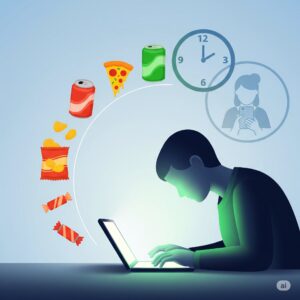
When screen life takes over real-life meals. Today, most of us live through our screens. Classes, social life, work, and even shopping happen online. But here’s the catch: this tech-focused routine is changing how we eat—and not in a good way. So, which situation is a barrier to eating healthy? It’s the constant tech use that shifts our focus away from mindful meals and towards convenience.
Skipping meals for screen time
Ever been so deep in a gaming session or study binge that you forgot to eat? That’s more common than you think. Many students delay or skip meals because they’re glued to devices. This daily pattern answers which situation is a barrier to eating healthy? It’s when digital distractions keep you from eating at regular times.
Overuse of food delivery apps
Food delivery apps are fast, easy, and often loaded with unhealthy options. It’s tempting to tap for pizza rather than cook. While tech makes ordering food effortless, it also encourages less balanced choices. This shows which situation is a barrier to eating healthy? It’s relying on apps instead of learning to cook or picking fresh foods.
Tech burnout and poor energy choices
After a long day of Zoom classes or remote work, energy is low. You don’t want to think, let alone cook. So, you grab something quick, often junk food. This tired routine is another clear sign of which situation is a barrier to eating healthy? It’s tech fatigue that leaves no space for good food habits.
Tech isn’t the enemy—but without balance, it can get in the way of healthy living. Try using apps that remind you to eat or help you plan meals. Tech can be part of the solution, not just the problem.
AI-based diet planning: Which situation is a barrier to eating healthy for busy people?
When time is tight, smart tools can help. Life gets hectic—school, part-time jobs, family stuff, and trying to squeeze in some fun. With so much going on, eating healthy often drops to the bottom of the list. Which situation is a barrier to eating healthy? It’s the lack of time and energy to plan meals, shop smart, and prep food. That’s where AI steps in.
No time to plan or cook
Let’s be real—meal planning takes time. And busy people rarely have that luxury. You wake up late, rush through the day, and grab whatever’s quick. Which situation is a barrier to eating healthy? It’s skipping planning and choosing fast food over balanced meals. AI tools like Mealime or Forks Over Knives can solve this by building a week’s plan in seconds.
Forgetting nutrition while multitasking
Juggling too many things at once? That’s when your diet suffers most. You might eat at odd hours or skip meals altogether. Which situation is a barrier to eating healthy? It’s when being too busy makes you forget what your body actually needs. AI-based diet apps help track your meals and send reminders so you don’t lose focus.
Choosing convenience over balance
Busy students often grab chips, soda, or instant noodles. They’re cheap, fast, and everywhere. But long-term, this habit harms your health. Which situation is a barrier to eating healthy? It’s choosing convenience without thinking of balance. AI diet planners suggest fast, healthy options based on what you already have at home.
Even with packed schedules, eating better is possible. AI tools can create smart, flexible meal plans that match your daily routine. They’re built for real life—just like yours.
Which situation is a barrier to eating healthy when digital distractions take over?
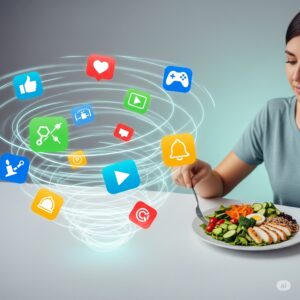
When your screen time affects your mealtime. It’s easy to lose track of time when you’re glued to your phone, gaming, or binge-watching shows. One minute you’re scrolling, and the next, it’s dinner time—but you’re not even hungry or aware. Which situation is a barrier to eating healthy? It’s when digital distractions pull you away from regular, mindful eating habits.
Skipping meals while online
Many students delay meals while finishing a game or watching one more episode. You ignore hunger signals until it’s too late. Then, you just grab snacks instead of eating a real meal. Which situation is a barrier to eating healthy? It’s missing proper meals because the screen becomes more important than your plate.
Mindless eating during screen time
Ever finished a whole bag of chips while watching a movie without noticing? That’s mindless eating. You’re not paying attention to portions or nutrition. Which situation is a barrier to eating healthy? It’s eating out of boredom or habit while your brain is focused on something else—like your feed or a series.
Prioritizing tech over health
You plan to cook something healthy, but a YouTube deep dive or endless scrolling steals your time. Suddenly, it’s easier to order fast food. Which situation is a barrier to eating healthy? It’s choosing screen time over your health, even if you had good intentions.
Digital distractions are everywhere. But recognizing their impact helps you take back control of your meals. Try tech-free mealtimes or meal reminders to stay on track. Eating healthy starts with being present.
Which situation is a barrier to eating healthy in modern life’s fast digital pace?
When everything moves fast, meals become an afterthought. Life today moves at lightning speed. You’re jumping between classes, scrolling TikTok, texting friends, or working online—all day. In the middle of this rush, which situation is a barrier to eating healthy? It’s the constant pressure to keep up that pushes healthy eating to the side.
No time to plan or cook
Fast-paced schedules leave little room to think about meals. Many students skip breakfast or grab junk food just to save time. Which situation is a barrier to eating healthy? It’s when your day moves so fast that even making a sandwich feels like a task you can’t squeeze in.
Digital work kills routine
Online classes, remote jobs, and constant notifications break your routine. You might miss meals or eat at odd hours. That lack of structure often leads to poor food choices. Which situation is a barrier to eating healthy? It’s living in a digital world where your routine depends on screen time, not meal time.
Prioritizing speed over health
When everything’s instant—messages, content, delivery—you expect food to be instant too. Quick fixes like noodles or chips become your go-to. Which situation is a barrier to eating healthy? It’s valuing speed over balance, because slowing down feels impossible.
Modern life makes it hard to pause and eat well. But small changes—like setting meal alarms or prepping snacks in advance—can help you stay on track. Even in a fast digital world, your health deserves time.
FAQs: Which situation is a barrier to eating healthy?
How does screen time affect healthy eating?
Spending hours on phones or laptops can lead to mindless snacking. You might eat while scrolling and not notice how much junk you consume. When screen time replaces mealtime, you skip proper food choices. Which situation is a barrier to eating healthy? Long hours in front of screens without breaks is definitely one.
Can skipping meals because of school be a barrier?
Yes, it can. Many students rush to school without breakfast. Some skip lunch because they’re too busy. When you skip meals, you’re more likely to eat unhealthy snacks later. Which situation is a barrier to eating healthy? Skipping meals due to a busy school schedule is a big one.
Is eating out too often a problem?
Totally. Fast food is quick and everywhere, but it’s not always good for your health. If you’re always eating out, you’re likely getting too much sugar, salt, and fat. Which situation is a barrier to eating healthy? Eating out often instead of cooking at home is a common one.
Does multitasking while eating affect food choices?
Yes. If you eat while gaming, watching, or studying, you don’t focus on your food. You might eat too fast or overeat. Being distracted can stop you from making healthy food decisions. Which situation is a barrier to eating healthy? Multitasking during meals definitely counts.
How does a tight budget get in the way?
When money’s tight, buying fresh fruits or veggies might feel hard. Cheaper options are often packaged snacks or instant noodles. Healthy food can feel out of reach. Which situation is a barrier to eating healthy? A limited food budget is one students face often.
Why do late-night habits affect eating?
Staying up late usually means late-night cravings. Most of those snacks aren’t healthy. You might grab chips or sugary drinks while watching something. This habit can mess up your diet. Which situation is a barrier to eating healthy? Staying up late and snacking at night is one many students face.
Conclusion
It’s not always easy to eat healthy, especially with busy schedules and distractions. Life moves fast, and making the right food choices can feel like a challenge. Which situation is a barrier to eating healthy? It could be skipping meals, eating out too much, or just being glued to your phone during dinner.
You’ve now seen how daily habits, time pressure, and digital life can all affect what ends up on your plate. Which situation is a barrier to eating healthy? The answer changes from person to person, but knowing your own habits helps you stay in control.
Even small changes—like eating without screens or prepping a snack ahead—can make a big difference. Which situation is a barrier to eating healthy? Spot it early, and you’ll be one step closer to smarter choices.
Healthy eating doesn’t have to be perfect—it just has to start.

